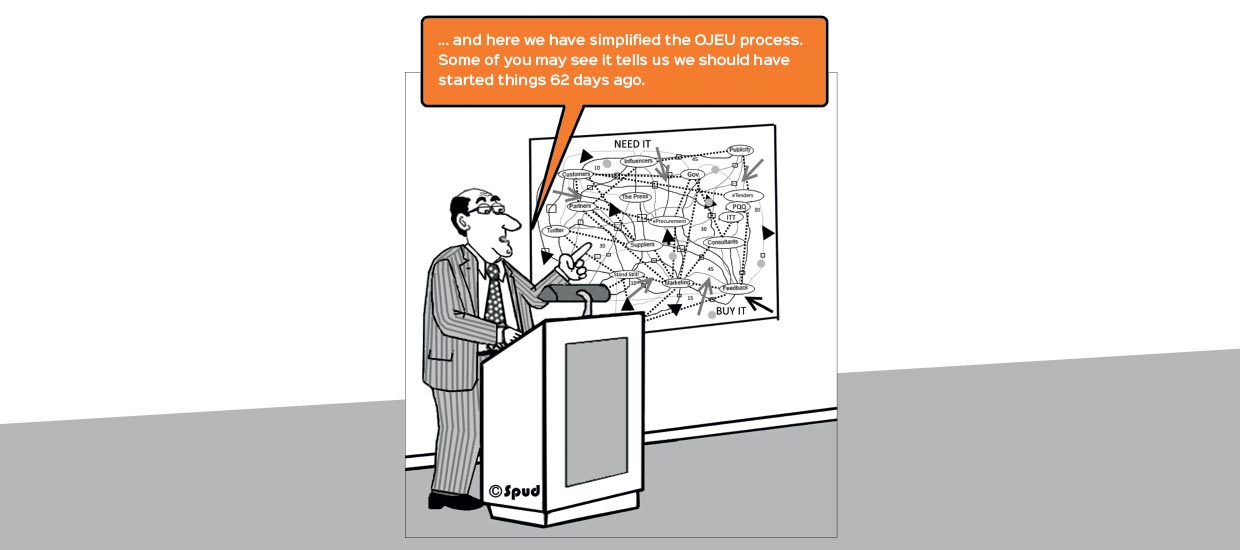Planning for procurement – step by step
It used to be a simple case of getting the best quality service for your school at the best value, but procurement is a whole lot more complex these days, says Lorraine Ashover

Procurement is an area that can be fraught with risks and, as the contract value increases, so too does the complexity of the legal and procedural requirements with which schools and trusts need to comply. However, the following steps should ease your way, whether you’re a small primary or a large MAT.
Plan
This is the most important part of any procurement process, so be clear what you want to get out of the exercise. Start with a list of your priorities, typically the highest spend areas. Which areas are true priorities? What can wait?
Base your ordering on value of spend, where improvements are needed or when contract renewals are due. Then take a step back and review your agreement set-up, making a note of likes, dislikes and what you think needs to change. Keeping a contracts register is good practice as it will give you a clear overview of which contracts are due for renewal.
Listen
Be receptive to others’ ideas and views – it will help the project run more smoothly. If your supplier knows your school, they should be able to make helpful suggestions for change. Value internal voices too, making sure you involve colleagues who may be affected by any plans. This will help inform your decision-making. Remember that you are looking for a quality solution that delivers for everyone at the right cost-to-value ratio.
Choose and issue
Maintained, free, MAT and academy schools must follow specific internal and external financial procedures.
If the ‘whole life value’ of the contract (duration plus optional extensions) is below the OJEU threshold (see overleaf) then you’ll need to follow one of two routes:
- Request for quote (RFQ) – for low value procurements, you’ll need three simple quotes.
- Request for proposal (RFP) – ask a minimum of three potential suppliers to provide a more detailed one-stage tender.
If the total value of the contract is above the threshold, it will require a two-stage tender process. You can use an existing OJEU compliant framework or run your own OJEU process. See: gov.uk/guidance/buying-procedures-and-procurement-law-for-schools for further guidance on this.
Ts & Cs
Contracts are the foundation stone for any work you do with suppliers. Having your own contract that mirrors the tender requirements at the start means you’ll be familiar with every clause. It also avoids a situation where bidders bring their own contracts to the table. Remember that having your own contract is one of the requirements of the OJEU process, which is enforced in the UK via the Public Contracts Regulations 2015.
Invite
Give suppliers the opportunity to gather as much information as possible by allowing them to visit your site before they submit a bid. This is essential for areas such as cleaning, catering, ICT-managed services and grounds maintenance.
For one-stage RFQ and RFP processes, suppliers should visit before their submission to take notes about your current provision and requirements, and to ask questions.
For a higher value procurement, you should invite the suppliers you’ve shortlisted at the invitation to tender (ITT) stage to visit your site – suppliers may recommend a different product or service once they have seen the site.
Award
For larger tenders, you should evaluate bids using weighting, scoring and award criteria, making bidders aware of this at the outset. Always inform all bidders about your decision because they have often invested a lot of time and effort into the tendering process. Tell the successful bidder why they were successful and then organise a meeting to discuss next steps – not forgetting the ten-day standstill period for OJEU compliant processes.
Make sure too that unsuccessful bidders know why they didn’t win. Provide details such as their score (versus the winning bidder), the shortcomings in their bid and recommendations for what could help their next tender.
Implement
If you don’t set aside enough time to properly implement the new contract then the rest of the process is wasted because you’re unlikely to benefit from any cost savings or improvements in service. Take time to go through the winning tender submission and make a note of everything that has been promised, both financially and operationally.
Monitor
Keep a close eye on the supplier’s performance against the contract. Remember that a contract with well-defined and monitored key performance indicators, as well as regular meetings, will always perform better than one without.
- Lorraine Ashover is MD of school procurement consultancy Minerva, which has helped schools tender £65million of contracts and generated more than £2.5million of revenue, refunds and annual savings for schools over the past four years.
For more information, see Minerva’s free e-book, 84 Points for a Perfect Procurement Process, which is available by request at https://minervapcs.com/contact
OJEU thresholds
The current Official Journal of the European Union (OJEU) thresholds for schools are:
- Works contracts: £4,733,252
- Supply and service contracts (sub-central authorities): £189,330
- Light-touch regime for health/social services (including school catering): £663,540
